Many businesses have had to close as a result of the COVID-19 pandemic, while others have had to adapt their operations. Many firms were prompted to pivot for pandemic success and adapt to changing market conditions as a result of the outbreak. We interviewed 26 company owners and entrepreneurs in the United States to understand more about the impact of coronavirus disease 2019 (COVID-19) on businesses and how it affected their operations.
INTERVIEW HOST
The host of this interview was Jed Morley. Jed Morley is the CEO of a leading payment processing service provider called PlatPay.

Table of Contents
The question we asked:
The pandemic encouraged many businesses to pivot and adapt to changing market conditions. How did you adapt? Did you introduce additional product lines or services?

Jessi Beyer
As a speaker, the pandemic could have sent my business crashing to the ground, but instead, a simple pivot from in-person presentations to virtual presentations allowed my revenue from speaking gigs to skyrocket during the second half of 2020 and beyond. While this pivot seems obvious, there were two key things I did that made this pivot as successful as it was.
First, I put some serious thought into how I could make virtual presentations as engaging as in-person ones. People were already sitting on Zoom all day, so I didn’t want them to just sit there and listen to me blab on for an hour.
Secondly, I sold bulk copies of my book to event and conference hosts that booked me to speak so that, firstly, attendees would have something they could physically touch and engage with after my virtual presentation, and secondly, the revenue from each virtual gig would be increased.
After so much time doing virtual presentations more frequently than in-person ones, I have to say that I like virtual ones more! They’re more accessible for attendees and less time consuming for me, and they allow me to speak at multiple events across all parts of the country in the span of a few short days.
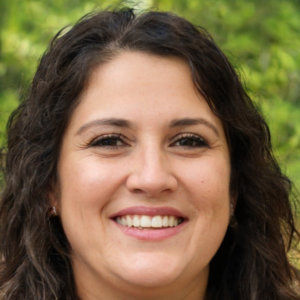
Lucie Chavez
Here at Radaris, we had to pivot in a big way in order to keep everyone safe and secure, while also continuing with the forward momentum we had leading up to the pandemic. We seemed to have a communication issue between departments and different levels within the company. A specific team was very communicative with each other, but there was an issue in continuously relaying progress and specific updates to the rest of the team in a timely manner.
This caused some delays and confusion among different teams who were waiting on the other for a specific item or answer. We also struggled to figure out an effective communication line from the managerial team down to part-time employees and more junior-level employees.
We had to find a way to connect everyone for important communications and also figure out how we can relay messages to other parts of the company. It came down to finding the most effective programs for us and making sure everyone was on the right page. Once we found these platforms and put them into effect, we had an easier job in staying on the same page, but there was definitely a learning period.
We had to find out who would do what and how they could do it to be effective. I think we had to stumble a bit early on in order to find our way and make sure we are as effective at communicating virtually as we needed to be. After that, things were much easier for us!

Manville Chan
I founded The Story of Ramen in 2016 in San Francisco. We host ramen cooking classes as corporate team building events. We welcome company teams to our facility and make ramen as an offsite activity.
The majority of our customer base tech companies such as Uber, Facebook, Google and Salesforce which see great value in team-building activities for their employees. Prior to the pandemic, we hosted an average of 800-1,000 people per month.
We found our niche and market our business mainly via SEO traffic to our web site as well as positive word of mouth. Obviously with the pandemic, in-person events ended and all customers canceled their events in March 2020. By April 2020, we introduced virtual ramen cooking classes, which includes an instructor-led Zoom session and ramen kits delivered to our customers’ doorsteps.
It has become a hit as companies are desperately trying to find ways to motivate remote/work from home employees. When we first introduced virtual classes, we had a steep learning curve in knowing how to package and ship perishable food ingredients across the country and how to make the experience more interactive and engaging. We have learned and adapted very quickly mainly through feedback from our valued customers and simply making mistakes!
As the pandemic continued, we found ways to expand our business beyond the Bay Area as we host events all over the US and globally. We are also no longer limited to the capacity of the facility which seats 40-45 people. We frequently host nationwide corporate events with 100+ people.
Our virtual business grew from 150 guests in July 2020 to close 1,800 in December 2021. We recently launched an udon class that allows us to ship ingredient kits internationally; and we’re getting a lot of traction lately.
I do think that the stress brought by the pandemic actually helped us to think outside the box to grow our business, turning lemons into lemonade. Previously, we were in our comfort zone and we were too busy to innovate.

Rohan Kadam
Hello, I am a marketing consultant and an established entrepreneur. I run a successful Niche website called Biking Know How.
I would like to share how I quit my job as a banker at JP Morgan Chase and started my blogging business for less than $1000 and turned it into a successful business. I started my blog just as a hobby.
I scaled my business, especially during the challenging COVID pandemic, and made it profitable in a short period (From the first month itself). I focused on doubling down my efforts on growing my niche website, which was initially just my passion project.
I would say that my online business has helped me stay occupied, motivated, and financially stable. I love the outdoors, biking and camping. I always wanted to share my unique experience with people. Initially, I would maintain a diary and would write about my outdoor camping endeavors.
Thanks to social media and my website, my audience over time has increased significantly. With social media and my website, many more people can access my adventures and plan their own.
This gives me immense joy and fulfillment. Some of the details on my blog are as follows.
- Bikingknowhow.com is my third blog (I run 2 blogs currently, all in different niches. I sold my first blog) that I had started. And it today gets approximately 5,000 monthly unique visitors. I earn money through two Ad-Networks namely, Google AdSense and Media.net which show ads on my website. (I make a minimum of $200 per month with both ad networks combined).
- I also partnered with Amazon via an affiliate partnership, and I promote the products and services of Amazon on my website (I make approximately $100 per month) by promoting products on my blog.
Challenges
As far as the hardest part or challenges are concerned, I had to face many, but two challenges stand out the most. They are as follows.
1. Time Management:
This was a very significant challenge because I was managing and growing my blog while having a full-time job. I would use my weekends and holidays to educate myself on skills, especially web development and digital marketing.
My blog allowed me to have multiple streams of income. As I saw decent cash flow coming in, I was interested to upskill myself on digital marketing and social media. I knew this would require my time and dedication. So, at every opportunity that I got to polish my skills, I made sure that I dedicated my time and attention to get better.
2. Getting Right Education
Well, to educate and polish my skills in digital marketing, I enrolled in many digital marketing and web development courses. I used platforms like Udemy and Udacity to enroll in the courses. I started voraciously reading blogs and success stories of food bloggers. This helped me get creative and experiment with the growth strategy of my blog.

Peter Ord
“The pre-pandemic world looks much different than our current times. With more employees working remotely or within a hybrid-like environment than ever before, we wanted to ensure that we adjusted our product, GuideCX, to meet the needs of business professionals everywhere, no matter what their workspace looks like.
It is critical for internal and external teams to be on the same page right from the beginning in order to achieve long-term success – and that begins with the client onboarding process.
We recently introduced a tool that we had been working on for years called the Navigator Reporting Engine because we recognized the need for teams to be able to understand each component of a project and the bigger picture of how it all intertwines, whether they are working side by side or across the world from one another.
The Engine offers never-before-seen metrics including forecasting revenues and the ability to meet deadlines, creating a strong foundation for projects and continued growth.”
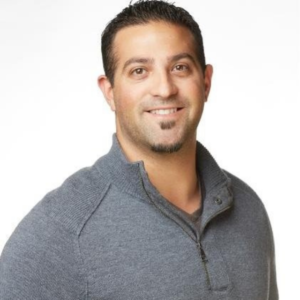
Ian Sells
We know how the pandemic has forced people to stay indoors and this has caused a huge spike not only in the number of people doing online shopping, but even the time they spent doing so. Surveys also found that many people do so on their phones more than on their computers.
To meet this customer behavior and make the most out of the influx of people doing online shopping, we decided to launch an app for both iPhone and Android users. This makes it a lot easier for them to shop and save money.
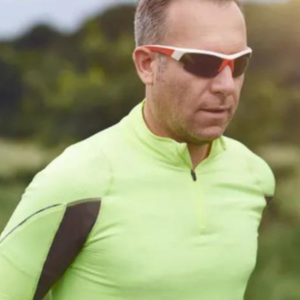
Eddie Bye
I’m Eddie. Founder of Physio Flex Pro. As a business owner during the pandemic, I either had to give up and stop doing business or continue. Fortunately, I was able to make my joint supplement business profitable. I want to share the realization that I had.
As well as the challenges faced and lessons learned along the way The biggest lesson that I’d learnt during this whole crisis is that you get a chance to improve your life when a huge problem comes. Some of us are entitled. We want things to be given to us. We don’t want to work, we don’t want to suffer, we just want the good things in life despite our character not deserving it.
And so tragedy happens and we find ourselves whining. It’s important to understand that an entrepreneurial life without crisis is not possible. You’re going to encounter one if you play this game long enough. Knowing this, we understand that it’s useless to want something that is impossible.
Furthermore, I realized that in order to solve a business problem, you need to improve as an entrepreneur. The best solution that I found during the pandemic was by changing myself initially and letting it reflect on my business. I consider it a blessing considering that I make money the more I improve myself. If you have any questions, please don’t hesitate to reach out.

Lauren Gast
Chief Marketing Officer on Pivoting in the Face of a Pandemic Because truck drivers are a part of one of America’s Essential Industries, pivoting in the face of the COVID-19 pandemic was of the utmost importance. Before the pandemic, our training required our instructors and students to be in close contact with each other constantly.
After COVID numbers began to rise, and supply chain shortages became more prevalent, we knew that stopping classes altogether was not an option. To create a safe CDL training environment for our students and staff so we could continue training, we developed a comprehensive pandemic protocol. In accordance with CDC guidelines, we instructed our trainees to postpone their training if they had recently been exposed to the virus or were experiencing flu-like symptoms.
We also published extensive sanitation and social distancing guidelines, requiring that our trainees wash their hands often and keep their masks on during in-cab training and testing. —Lauren Gast, Chief Marketing Officer at Truck Driver Institute, a truck driving school with eleven campuses across the United States

Brice Gump
The onset of the pandemic brought a shock to the system of many companies including ours. It is no secret that marketing services become a secondary concern for several businesses but as a business leader it has always been my priority to never remain stationary when faced with a crisis and to keep it ongoing.
The one thing that I did was constantly stay engaged with my existing clients and even network more than usual on my social media platforms to increase engagement and spread greater brand awareness. We started posting testimonials on our website to show potential clients a more realistic aspect of the services provided.
Constant engagement helped me gain more clients than I thought I would in these turbulent times and we even increased our brand awareness through this. we had to return clients as well. It wasn’t all sunshine and happiness for us, we faced serval setbacks with communication and workflow being hindered due to the transition from physical to remote/ hybrid work. But with a great team and the use of efficient crisis management, we learned to adapt and supported each other to adjust to the new norms.

Richard Lubicky
Ever since the pandemic, the whole world has been transforming, whether our lifestyle or business! Majorly, a lot of businesses have had serious impacts!
Since such changes have Vern accounted as the new normal, businesses have to alter and align their business goals and vision to grab opportunities at the right time to gain competitive advantage.
Considering such a situation and changes, I also altered some of my Cybersecurity SaaS business elements to become a leader in the market. Since people had to wait in long queues in government offices to find vital information, we advanced our reach and provided them with that information within a fraction of seconds!
Most of our services are introduced as free services to help our clients test the deep waters! We added client reports and background checks as our revenue-generating streams. This was largely possible due to the Covid-19 pandemic.

Paul Baterina
The pandemic presented unique challenges for businesses all across the board. Sleep Advisor was fortunate in that the bulk of our workforce (our marketers, developers and bloggers to name a few) already worked remotely before Covid-19, so all we needed to do was modify our work model to a remote environment for everyone who works in our headquarters (myself included) in Austin, Texas.
The pandemic gave us an opportunity to use alternative digital platforms to intensify our planning phases for our digital marketing campaigns and collaborate remotely simultaneously. For example, we shifted all our work communications and physical operations over to Slack and Microsoft Teams so we could utilize video calls and digital channels for specific work departments and projects.
My team and I at HQ had lots of days where our digital platforms didn’t sync up the way we hoped and where we experienced difficulties with performing certain tasks timeously. For example, we often struggled to stay on schedule with filming our YouTube demonstration videos due to some of our main vloggers contracting Covid-19 and needing to stay in quarantine and recover at different stages of 2021.
With that said, we did our best to keep the lines of communication open, express empathy and support those of us who couldn’t cope as well with our workload and physical health during the pandemic. We’re still learning and constantly finding new ways not only to survive during these trying times, but to thrive as well.

Kim Marie Branch-Pettid
The pandemic was a shock to all of us and we had to make some quick changes to adjust to the state of the world and do whatever we could to stay afloat. It was especially important to me to ensure that all my members and staff felt supported and had the resources necessary to succeed in spite of the times.
To offset barriers to connection in the pandemic, I invested in LeTip Wired, a new proprietary software and mobile app that helps members electronically track existing business networks and recruit new members. Introducing LeTip Wired certainly helped my team feel like they belong to a nationwide community and ultimately ensured many small businesses wouldn’t have to close their doors.
As a result, between 2020 and 2021 we were able to invite more guests and had a 60% join rate. Thanks to a recent LeTip membership survey, I also discovered that many of LeTip’s members across the US also made individual changes to their businesses in order to adapt to the rapidly changing market conditions.
For example, Jack Watkinson is a member of LeTip of Somerset Hills representing the I.T. category for the Somerset Hills Chapter in New Jersey with a company called Outsource My I.T. He reported that in 2020 he used more online methods of service, added new products, and services to his catalog, hired new employees while retaining most of his employees.
Similarly, Chief Executive Officer at H3 Systems and member of LeTip of Napa, CA, Donald Hartung reported that to offset business slowing down he used more online methods of service and adjust because of supply chain issues as well.
About LeTip International: LeTip International, Inc., the world’s largest privately-owned business leads organization, is a networking organization made up of members held to the highest caliber of professionalism and achievement, all of whom strive to do business with one another.
Founded in 1978, LeTip has more than 250 chapters throughout the USA and Canada and is credited with hundreds of thousands of business referrals per year. Setting the standard for referral organizations, LeTip members are known throughout the B2B referral industry for their dedication to helping each other grow their businesses. Join a chapter or start your own at letip.com.

Nathan Hughes
Due to the pandemic and its subsequent restrictions, both small and large businesses have suffered. As a marketing firm, we had barred traditional methods to market products and services. Traditional PR strategies were no longer functional. At the right moment, digital platforms came in as aid for us.
Digital Marketing and PR strategies, including backlinks, SEO (On-page and Off-page), social media, and email marketing, were some of the best strategies that helped our firm soar high from this pandemic.

Adit Jain
The pandemic brought with it a lot of uncertainty for companies and people alike. Back then, we had not secured our series fundings, and we were operating with a smaller fund. We’ve always strived to be as transparent as possible with our team. So, following that same principle, we conducted town hall meetings and apprised each member of Leena AI of the situation regarding our finances.
Every member of our team was on board, and in fact, delivered 200% more than what we expected. Their perseverance reflected their dedication and motivation towards the company. Soon after, we secured our Series A funding, followed by Series B in the second consecutive year, and things started to get back on track.
For us at Leena AI, the pandemic really helped us grow as a company, both internally and externally. This adaptation to Covid brought in new ideas – we were introspective on what we learnt as a company, and utilized that to build solutions for enterprises that were facing issues brought on during the pandemic.
We introduced a number of products, such as the Covid-19 Workplace Response Suite, which assists organizations facilitate a safer return to the workplace, by helping them track and maintain employee vaccination records, employee health statuses, employee rostering, and even booking vaccination slots. In addition to this, during the pandemic we were approached by a number of healthcare providers for their requirements of a similar product.
One to track systems for vaccination statuses for both patients and staff, send reminders to patients about their second or booster doses, conduct Covid tests, and so on. We also came up with Work-From-Home surveys for employees to keep a check on their wellbeing, both mental and physical. In my opinion, Leena AI took the pandemic head-first and came out stronger, larger, and better than ever.
We pooled in all our resources, gave it a 100% and assisted millions of employees around the world cope with the pandemic.
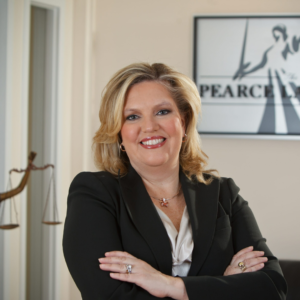
Edith Pearce
As a law firm involved with personal injury cases, we constantly have paperwork our clients must sign. Some of these documents include fee agreements, medical authorizations, and settlement agreements.
This often meant the client would have to come into our office to sign various paperwork during their case. When the pandemic hit, we began using DocuSign to provide clients the ability to electronically sign documents.
The DocuSign electronic signature solution in the United States complies with the definition of an electronic signature under the Electronic Signatures in Global and National Commerce (ESIGN) Act and the Uniform Electronic Transactions Act (UETA).
This has allowed our clients to sign all of their documents in the comfort of their own homes. While we have also adopted other tools such as video conferencing software, DocuSign will probably be the most important remote working tool for our firm in 2021.

Michael Dean
The biggest way my company had to adapt during the pandemic was in our online presence. With consumers stuck at home, it meant they were spending way more time on their devices. In order to continue growing as a business and obtaining a bigger audience, we had to start optimizing our business site for mobile use, and developing more of a presence on social media.
New businesses are popping up online everyday, so prioritizing your business’ online presence is crucial. As a content-based business, website traffic is currency, and the only way to secure consistent traffic is to lean into the current global digital landscape.

Tennille Thomas
I adapted to changing market conditions by doing things in reverse by creating a brand new business model that was a continuum of my current model. My business model was to create a living canvas if you will; whereby my products had to become services and my services became products.
This would spark innovation for the continual creation of products and services born out of the services and products I currently offer. In other words, my industry encompasses e-commerce, health/beauty, from the realm of natural skin care. I had to find a way to combine all those elements without losing the voice of my brand.
Please understand that your brand is your voice visually. It will speak for you before you show up. It is imperative for the message of your brand to be clear and concise so that people can identify it and engage with it no matter the platform(s) being utilized to represent it. By introducing new services and products out of your current offerings you will not compromise your brand identity.
For example, one of my products is a luxury hand oil. I made this oil come to life for my customers by way of a demonstration video in real time. This not only increased engagement by making them feel a part of the product but encouraged sales in real time. In addition, I created a service that is video on demand for those who truly desired this type of educational engagement by way of a subscription. It provides a platform for them to be able to watch how to use these products and services at their leisure.
Lastly, providing them an opportunity to engage with me directly. As a result of that direct engagement, opportunities have been afforded to those that are active on my platform. Such as participation in helping to create a product. If I use that product their contribution is recognized, they are given perks and directly become a part of my specialized engagement team.
As an entrepreneur you have to be innovative, creative, and inventive to separate yourself from the masses with never compromising your customer base. You do this by employing hi-touch.
You will not only create multiple streams of income for yourself but be able to continuously create avenues of opportunities and one of a kind experiences for your customers. Who would of thought that all of this would derive from a product that turned into a service sparked by innovation through the service that would create a product everlasting.

Darren Lopez
“We adapted our business plan in two different ways. First, we added product lines that we thought people in the new normal would find appealing, including a new adult beverage we call Milli. We also added additional immune and health-related products including our Be-OnGuard series targeted toward people that want to “be on guard” against viruses and bacteria.
In addition, we adapted our distribution strategies and started focusing on streamlining and simplifying the sales process with an enhanced emphasis on direct sales and a new aggressive Amazon strategy.”

Carter Reum
When we look at the pandemic and its effects on companies across the globe, it’s important to also look for some of the positives that have come from such an unexpected situation. Many companies have made huge pivots; yet this has also encouraged those businesses to become more innovative, creative, and open to taking well-calculated risks.
Some employees are finding that they can be more productive even when working remotely. Of course, many companies have found the pandemic conditions to be challenging, but just as many are also finding newfound strength and exponential growth. Specifically, we’ve seen that wellness and mental well-being are now unprecedented opportunities for innovation and investment.
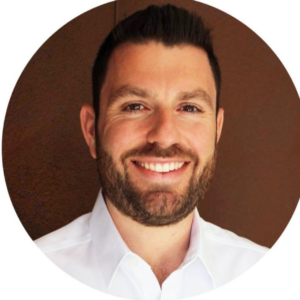
Greg Gillman
Being a leader during a pandemic will put your leadership skills to the test–most importantly empathy and flexibility. With the ever-changing rules surrounding the pandemic comes a lack of structure or even an office, which can potentially lead to feelings of isolation, lack of motivation, disruptions to processes, and even workplace conflict.
During these uncertain times, you can’t lead with certainty, which can be a challenge to leaders stuck in their ways. Pay close attention to your employees and their performance, and be sure to be sympathetic to their needs and pivot when and where necessary to ensure optimal success.

Ryan Rottman
Functioning effectively as a leader or an entrepreneur during a pandemic is only viable if you can be flexible and understand how and when to pivot. This means encouraging innovative thinking and really listening to all the ideas your team brings to the table – big or small.
Playing it safe in uncertain times might seem appealing, but it’s important to take risks in order to yield results. Additionally, as some business environments slow down to accommodate changes, use this opportunity to brainstorm and plan for your next big move!

Becky Brown
As a blogging business, we noticed a big increase in traffic as the pandemic grew but our audience’s demands grew as well. Producing content was no longer enough to convert our audience as they were looking for more concrete ways to engage with our business. What we did to adapt was we built a new webpage that shows limited-time shopping deals where our customers can quickly and easily buy their favorite products at a discount.
All we had to do was keep the page up-to-date and running, and our customers were more than happy with the feature. This approach helped us turn a simple shopping blog into something more than that, and we are looking forward to adding even more fun features like this in the future.

Megan Sumrell
“The pandemic definitely brought many opportunities to add a digital focus to my business. Prior to the pandemic, my planners were all physical planners and much of my training was conducted live or in person. The pandemic caused people to really lean into technology and leverage digital assets more.
I created a digital version of my planner for tablets along with launching an app in the app stores to make training readily available via mobile devices. Now, my customers are able to participate in training events from their phones at their convenience instead of from their office at set times.”

Nick Collins
When the pandemic began, my clients in many parts of the country faced shut-down mandates issued by state governments struggling to slow the spread of the novel Coronavirus. Using this time to pivot again, I relaunched my company as Sartoris Digital to offer my clients an expanded and inclusive menu of services.
I previously had worked with big pharma, major airlines, telecommunications, finance, and sporting goods brands, which has given me a diverse set of skills to bring to my growing digital marketing firm. However, when the pandemic hit, I realized that many small businesses could benefit from my services, so he re-launched my offering (previously Sartoris Technologies), to include services that are better suited for small businesses, including better price points and a more tailored, hands-on experience.

James Parsons
It’s crazy that people thought the importance of content would have decreased many years ago, but it has only risen in importance. Even during the pandemic, content continued its dominance and has been so important for online companies if they want to secure their position in the market.
It’s vital for businesses to have unique, quality content on their website for a variety of reasons. It stands out to potential clients, it helps them rank better on Google, it can be used across their entire marketing strategy, and it can even impact their PR campaigns.
We saw the demand for quality, on-time content when the pandemic hit and we worked hard to find writers who could join our team and become an asset. That’s the biggest thing we had to do when the pandemic hit and we were swamped with work: hire more quality writers so we could keep up with orders, but also cement our place in the industry because of the quality we deliver.
Finding writers to fit our team wasn’t easy, but that was helped by the fact that more people were working from home and open to working remotely. It took time to make a plan and execute it, but we did it and were able to pivot to this new demand.

Gabriel Dungan
We didn’t introduce any pandemic-specific products or services, but we did use the sudden shift to increased online shopping as an opportunity to really personalize our social media engagement.
We started using customer testimonials and reviews in more marketing campaigns in an attempt to create more unique and personal consumer engagement. With digital engagement becoming the most important part of marketing, we used that as a chance to really invest time and money into creating high quality content on all channels, including TikTok and Instagram.
If you are a business leader and you’re not prioritizing your business’ social media channels, you are going to miss out on tons of possible conversions and traffic.


